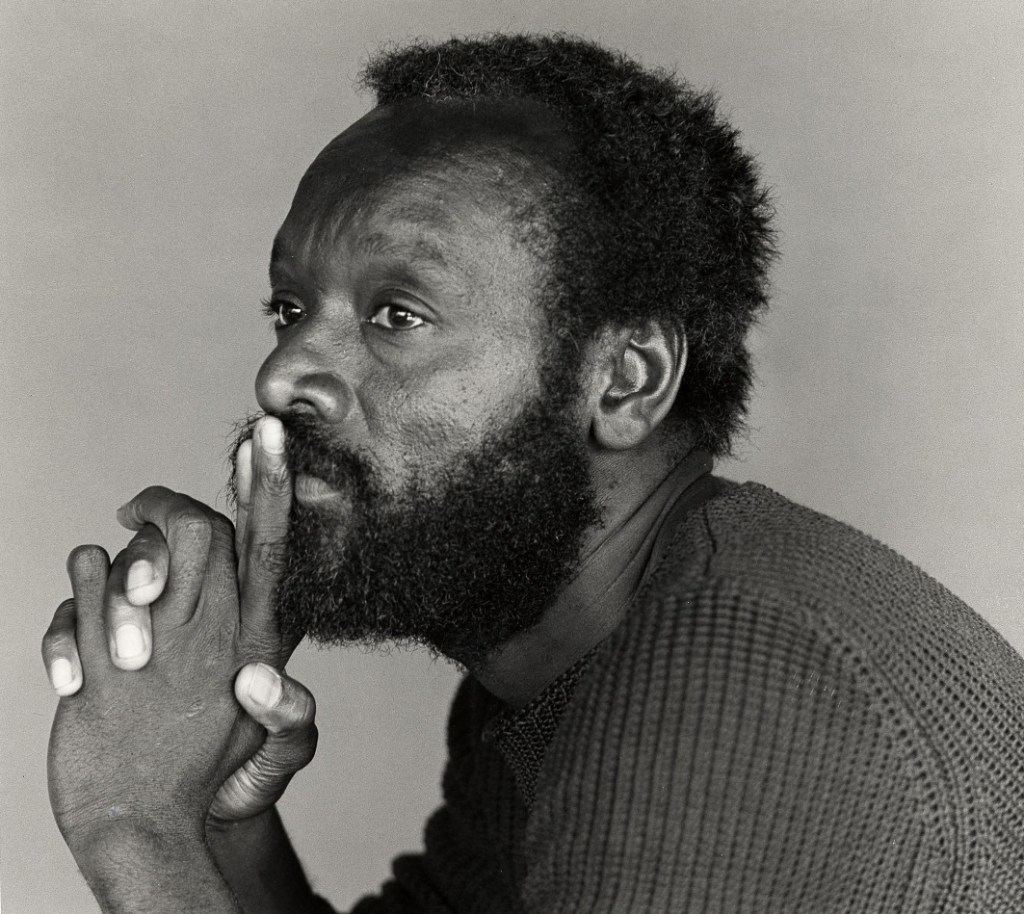Raymond Saunders, who created enigmatic paintings often infused with sociopolitical undertones, has died at 90. Galleries Andrew Kreps and David Zwirner, which co-represented the artist, announced his passing in a joint statement on Instagram on Monday.
Saunders’s work is characterized by an assemblage style with an extensive use of black paint that tied together both his commonplace lived experiences and formal art training. Saunders weaves complex narratives through elusive means and, in so doing, often prods the very fabric of what it means to be an educated Black American man.
Related Articles

“i am not here to play the gallery,” Saunders wrote in his 1967 essay “Black Is a Color,” in which he outlines his ideas of the role of an artist. “i am not responsible for anyone’s entertainment. i am responsible for being as fully myself, as man and artist, as I possibly can be, while allowing myself to hope that in the effort some light, some love, some beauty may be shed upon the world, and perhaps some inequities put right.”
Thirty-five of his large-scale works were the most recent subject of his first career-spanning retrospective “Flowers from a Black Garden” at the Carnegie Museum of Art in Pittsburgh—a fitting homecoming for the artist, who grew up in the steel city. In a review of the show, ARTnews‘s Alex Greenberger wrote that Saunders “shows that good paintings shouldn’t give away their meaning so easily, since art is a fiction and fictions can only move us so close to the truth. He makes it feel nice to be led astray.”
Born in 1934, Saunders took classes at the museum and studied under Joseph C. Fitzpatrick, the director of art for Pittsburgh public schools, who also mentored the likes of Andy Warhol, Philip Pearlstein, and Mel Bochner.
Saunders received a scholarship to attend the Pennsylvania Academy of the Fine Arts in Philadelphia and subsequently received a Bachelor of Fine Arts degree from Carnegie Institute of Technology in 1960. He then moved to Oakland, California, where he spent most of his life and career. In 1961, he received an MFA from the California College of Arts and Crafts, and later taught there—eventually becoming professor emeritus—and at California State University East Bay, Hayward, as a faculty member, beginning in 1968.
He was the recipient of a Rome Prize Fellowship in 1964, a Guggenheim Fellowship in 1976, and twice was awarded the National Endowment for the Arts Awards in 1977 and 1984.
His work has been featured in a number of seminal exhibitions including “Soul of a Nation: Art in the Age of Black Power, 1963–1983,” organized by Tate Modern in London in 2017, and “Now Dig This! Art and Black Los Angeles, 1960–1980,” organized by the Hammer Museum in Los Angeles in 2011.
Saunders’s work is in the permanent collections of some of the world’s most notable institutions, including the National Gallery of Art in Washington, D.C., the Museum of Modern Art in New York, Metropolitan Museum of Art in New York, Whitney Museum of American Art in New York, Walker Art Center in Minneapolis, Museum of Contemporary Art in Los Angeles, Hammer Museum in Los Angeles, San Francisco Museum of Modern Art, and Berkeley Art Museum in California.
“When I first encountered Raymond Saunders’s oeuvre, which spans more than seventy years, I was struck by its depth, complexity, and innovation, and by his intellectual contributions to critical discourse through his essay ‘Black Is a Color.’ We have been honored to present his work in New York and Paris, and to collaborate on his first—and long overdue—U.S. museum retrospective at the Carnegie Museum of Art in his hometown of Pittsburgh, which closed just a couple of weeks ago,” David Zwirner said in a statement.
“Raymond will be dearly missed by his family, friends, and the Bay Area community, where he had lived since the early 1960s. His work, however, will continue to be seen and discovered by new audiences for many decades to come as he takes his rightful place in art history,” Zwirner added.

